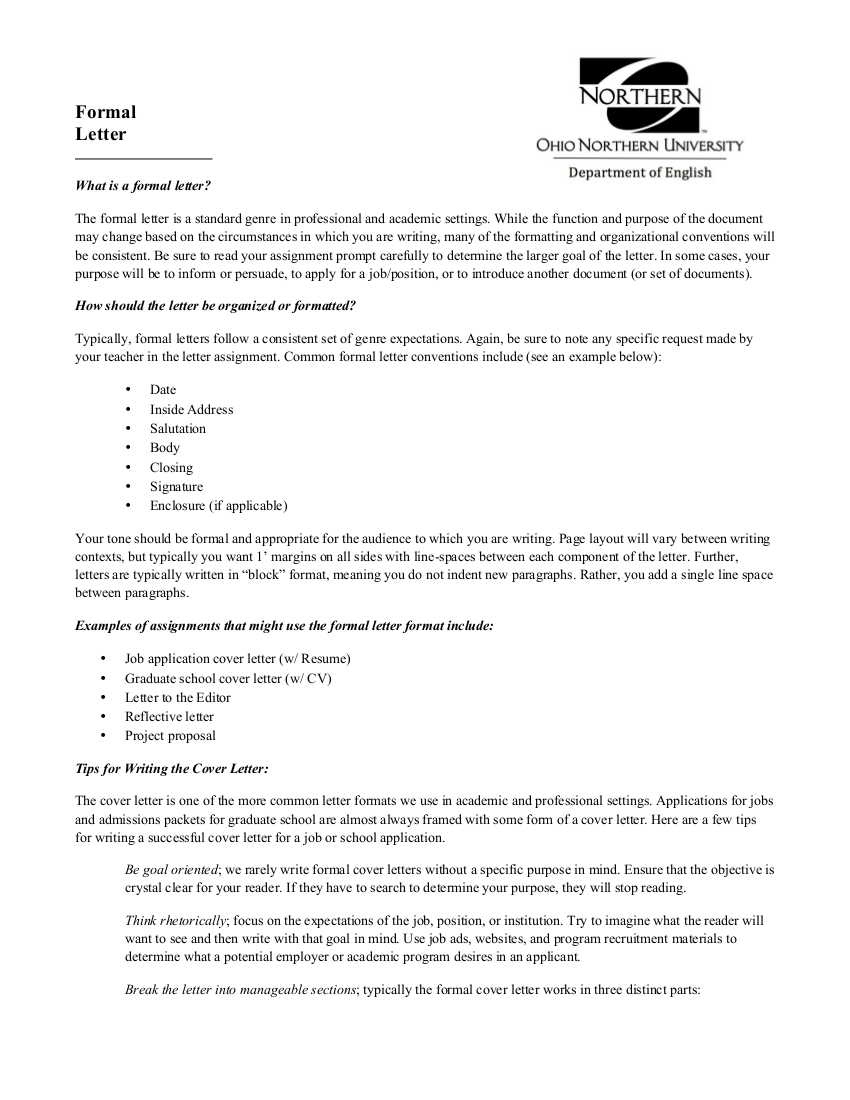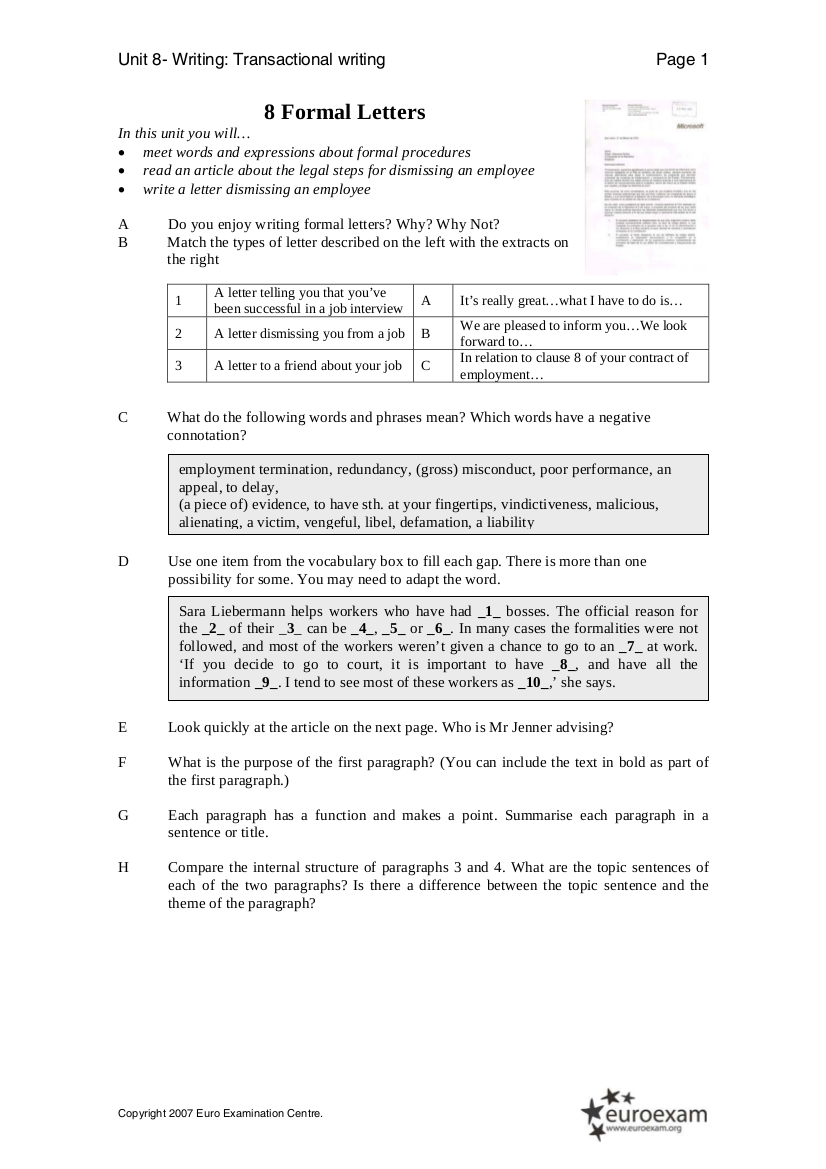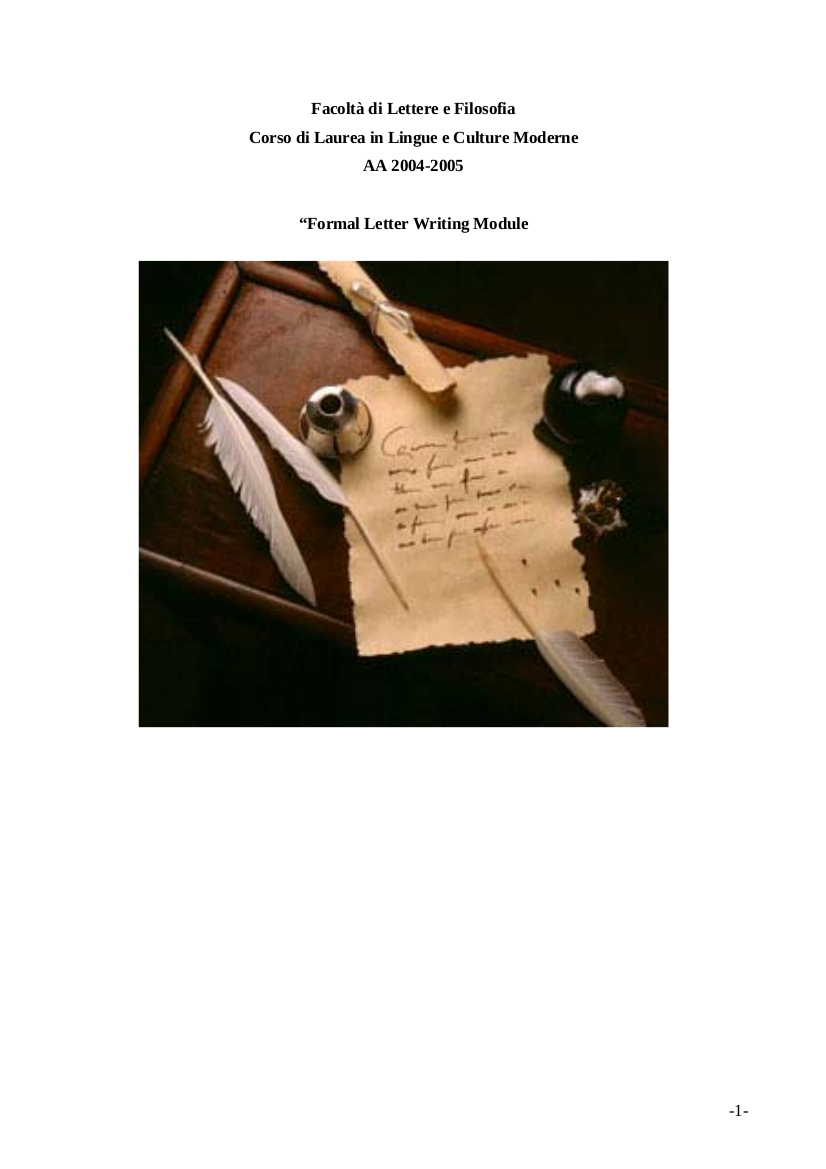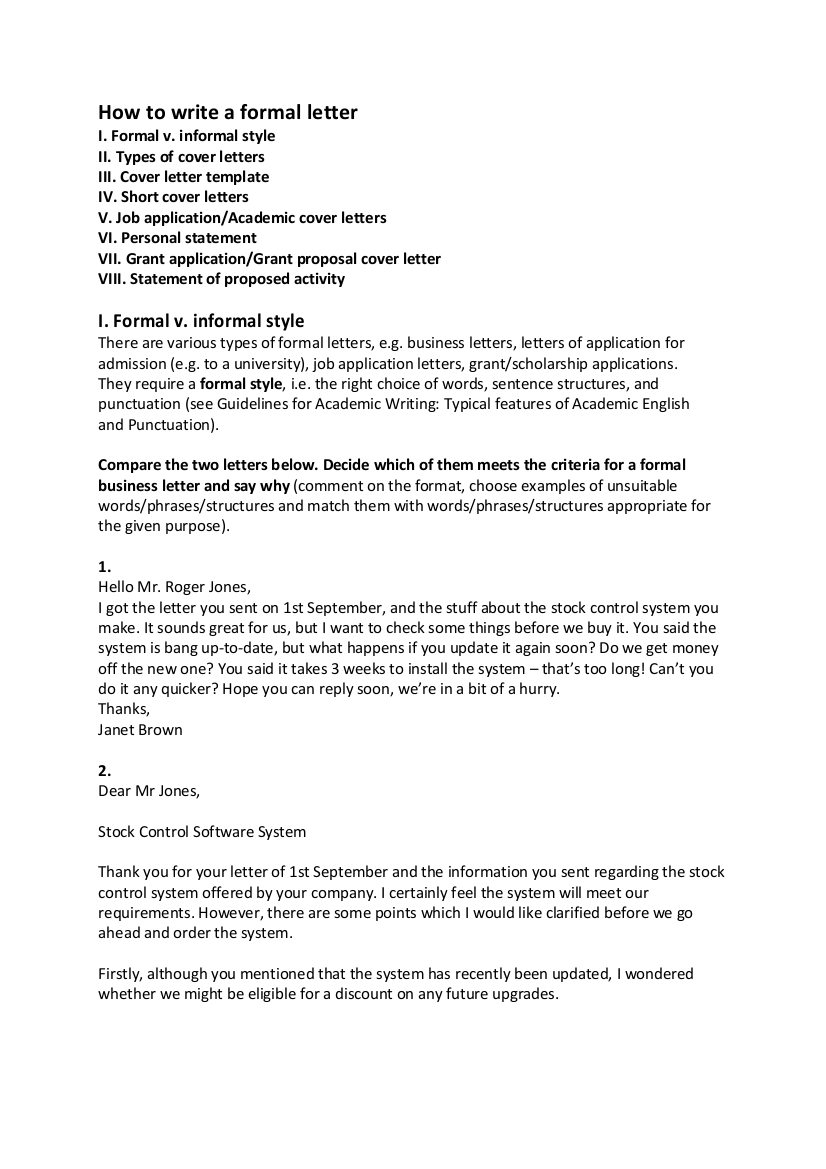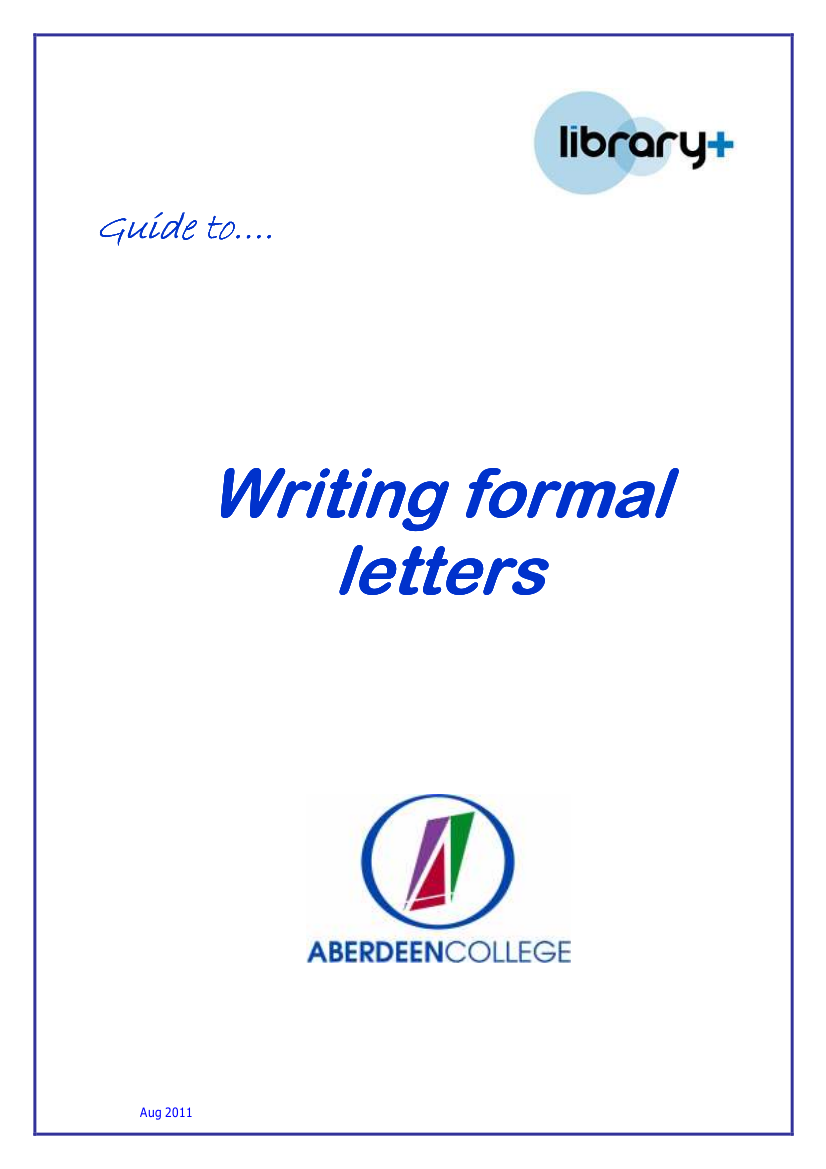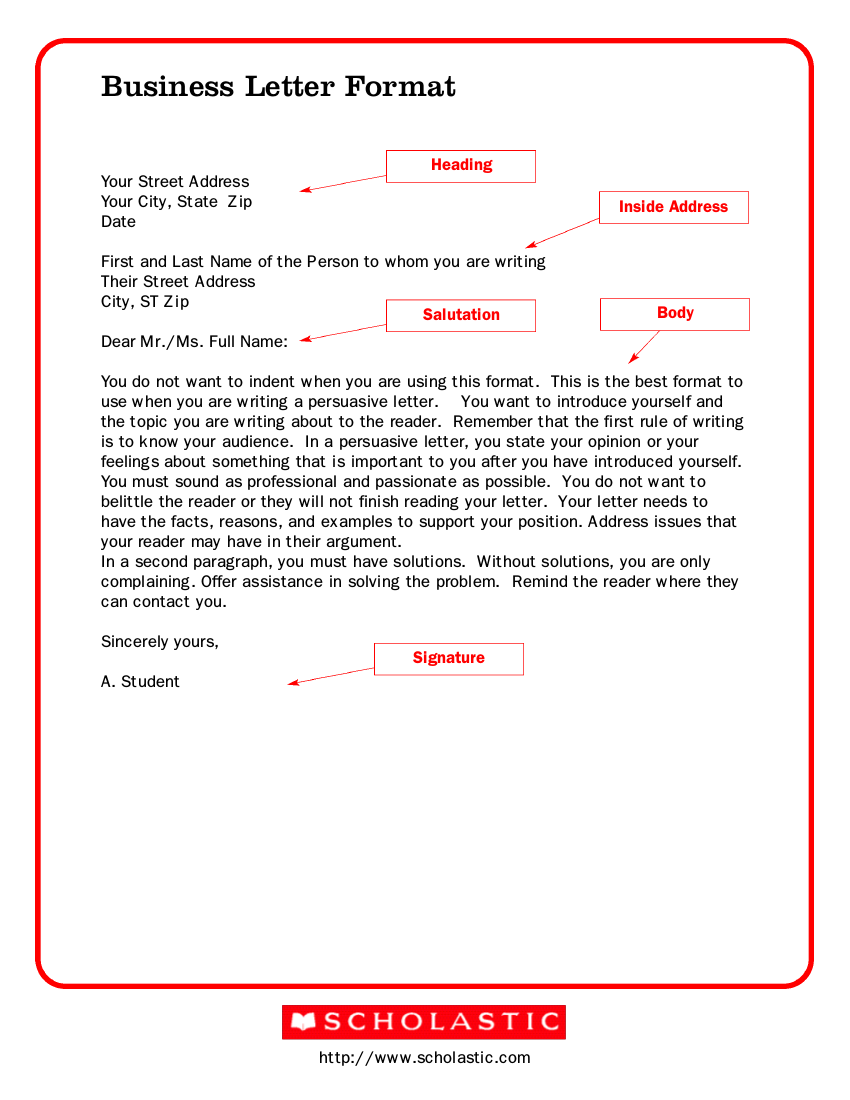7+ Formal Letter Writing Examples
Not all of us had the privilege to be extensively taught how to write a business or a formal letter. Not all of us have also seen its importance since in this email-driven society, we already think that formal letters are now an extinct document that lost its purpose in the advent of the Internet.
However, just when we thought, when applying for a job, there are still some businesses who required us to send a cover letter along with our resume; when we want to complain, we are to express it using a complaint letter, and; when we were asked to invite a prominent person, we should send a formal invitation letter as a show of respect.
Formal Letter Formats
1. Full-Block Style
This formatting style is very popular for writing a business letter because it is the safest and easiest format to play. The only thing that you should keep in mind is to put all of the components and paragraph have to place on the left side next from left margin, which is usually about one and one-half inch. Refer to this example below:
[Your Name / Company Name]
[Title (Optional)]
[Address]
[Tel]
[E-mail (Optional)]
[Date]
[Recipient’s Name]
[Title (Optional)]
[Company Name]
[Street Address]
[Town, County Postal Code]
Dear [Recipient Name]:
[1st paragraph of the Body of the letter]
[2nd paragraph of the Body of the letter]
[3rd paragraph of the Body of the letter]
Yours sincerely,
[Signature]
[Your Name, Title]
2. Modified-Block Style
This formatting style is similar to the block style only that the header, date, complement section, and also signature will be placed on the right side next to the middle of the paper. Refer to this example below:
[Your Name / Company Name]
[Title (Optional)]
[Address]
[Tel]
[E-mail (Optional)]
[Date]
[Recipient’s Name]
[Title (Optional)]
[Company Name]
[Street Address]
[Town, County Postal Code]
Dear [Recipient Name]:
[1st paragraph of the Body of the letter]
[2nd paragraph of the Body of the letter]
[3rd paragraph of the Body of the letter]
Yours sincerely,
[Signature]
[Your Name, Title]
3. Semi-Block Style
This formatting style is quite similar to the modified-block style, but the first paragraph in the content is indented. See this example below:
[Your Name / Company Name]
[Title (Optional)]
[Address]
[Tel]
[E-mail (Optional)]
[Date]
[Recipient’s Name]
[Title (Optional)]
[Company Name]
[Street Address]
[Town, County Postal Code]
Dear [Recipient Name]:
[1st paragraph of the Body of the letter]
[2nd paragraph of the Body of the letter]
[3rd paragraph of the Body of the letter]
Yours sincerely,
[Signature]
[Your Name, Title]
Formal Letter Basics
8 Formal Letters
Tips on How to Write Formal Letter
Whether you already know how to write a formal letter or you’re still a beginner at writing one, you can make use of this tips when writing a formal letter:
1. Be concise and K.I.S.S.
Always make sure you have stated the purpose of sending a formal letter in the first paragraph of the body of your letter. Never stray away from the subject for this will confuse the recipient.
Since it’s a formal letter, also make sure that your letter is void of highfalutin words or flowery words because conciseness should be observed in formal letters. Follow the K.I.S.S. rule which goes Keep It Short and Simple. You may also see interview writing examples
You may want to use this excerpt from Strunk and White’s The Elements of Style as your rule of thumb:
“Vigorous writing is concise. A sentence should contain no unnecessary words, a paragraph no unnecessary sentences, for the same reason that a drawing should have no unnecessary lines and a machine no unnecessary parts. This requires not that the writer make all sentences short, or avoid all detail and treat subjects only in outline, but that every word tell.”
2. Use the right tone — the formal tone
Keep in mind to always use the right tone, which is a formal one, when writing formal letters. This means that any slang and jargon should be omitted unless the jargon is related to the field of the recipient and avoid using contraction such as I’m, can’t, and, it’s. Also, avoid using vague words remember the first tip which is to be concise and direct to the point. You may also see examples of writing a positioning statement
Even if you are sending a complaint letter, be polite and respectful. If you want your complaints to be attended to and be regarded with respect, treat the receivers of your complaint letter as well. If they have disrespected you in the first place and is the reason why you are giving them a complaint letter, this does not mean that you have to be disrespectful in return. You may also see examples of writing a DBQ essay.
3. Proofread
If you have always taken proofreading for granted, then this tip would put in your head that you should never take proofreading for granted. Proofreading is one of the most important things before you put in your letter in the envelope. Proofreading does not only help you in seeing the spelling and grammatical errors but it can give you some time to see that there is some information that you have missed including and that there are some sentences that could use some reconstruction. You may also see grammar worksheets
When checking the spelling and the grammar, you make use of an online checker, such as Grammarly, to help you in correcting. However, the downside of these checkers is that it’s not accurate every time and cannot catch all of the errors your letter has; that is why you should not be dependent on it. You may also see newspaper report writing examples
If you do not have an internet connection, you can make use of a dictionary or a thesaurus when checking your letter. Do not only restrict yourself to only checking your grammar, you should also check the punctuations you have used and that the sentences have a complete thought. You may also see punctuation worksheet examples
After proofreading your letter, you may want to have someone else to proofread your formal letter. There can be instances wherein you have may still have overlooked errors in your letter. This is because you have read it for so many times you think you have already got everything right. Unless there is a deadline for submission, just take your time in writing a formal letter. Rushing will only lead you to make a lot of mistakes and this will give a bad impression of you in the eyes of the receivers of your formal letter. You may also see examples on writing a family history report.
4. Presentation matters
Even in the modern times, the first impression really lasts, that is why you should also not take the presentation of your formal letter for granted. You may also see tips in writing a reflective statement (PDF).
Aside from making sure that the content is near-flawless, you also have to make sure that you have used a good quality paper and a matching envelope, or at least clean, for your formal letter. Also, make sure that you know how to label the envelope properly. Even those are just the physical aspects, it would still matter because it is where you will place the content of your letter. You may also see writing a heartfelt resignation letters.
5. Be Complete and Specific
Despite the first tip, do not take conciseness too far to the point that its read like a telegram. You should not write what should be said but you should also mention the important words that can help you achieve your goal. Some people would say that is wrong to include basic facts about you when in fact you really should make sure you include enough background for your reader to at least know who you are especially if you are both strangers to each other and that they would also get what you mean. You may also see business proposal letters.
When being specific in your letter, it means that you do not express an abstract idea to the recipient of the letter and leave it to him or her your purpose of sending a formal letter. If you are to discuss and propose ideas, do so with concrete examples. If you need numbers, include them in your letter. However, do not go too far in creating a complete and specific mental picture for the receiver of your formal letter. You would already know you’re going too far if you yourself will feel overwhelmed reading the formal letter you just wrote. You may also see formal writings.
Formal Letter Writing Module
How to Write a Formal Letter
Guide to Writing Formal Letter
Business Letter Format
Formal Letter Writing
How to Format a Formal Letter
There is a standard format to follow when writing a formal letter. This standard format can actually help to present your letter in an attractive and impressive manner and will ensure that your thoughts are well-arranged and will be taken seriously by the recipient of your formal letter. You may also see formal notices.
1. Heading
The heading consists of your address and the date. Keep in mind that your name is excluded in this part.
You may or may not include your contact number or your email address in this part.
When Using block format, the heading goes in the top left-hand corner of the page.
2. Inside Address
The inside address consists of the name and address of the person to whom you are sending the letter.
As much as possible, address the formal letter to a specific person because it would sound disrespectful if you would only put “to whom it may concern”. If you really do not know his or her full name, you can just at least try to include his or her title. You may also see formal emails.
3. Salutation
This part is where you will greet and the most usual greeting is Dear. After your choice of greeting, you will then add the person’s name and punctuated with a colon.
There are some cases wherein you do not know whether the person you are addressing is a man or a woman, you may this: Dear Sir or Madam.
Also, take note of the civil status of the person you are sending the letter to. It’s easier for the men because you can just use Mr., but as for the women, there are various choices like Miss, Ms., and Mrs.
If the person has a specific title such as Dr., Hon., and Engr., make sure that you use it.
4. Body
After the salutation is the Body of the letter – the main part of the letter. The way you indent each paragraph depends on the letter format you are using. It is adviced that you follow the tips above when writing this part.
5. Closing and Signature
This is the end part of the letter. Even if the closing usually consists of two words, the only word with the first letter capitalized is the first word. Before the signature, you must first punctuate the closing with a comma. Leave at least two spaces between the closing and the signature so you will have an ample space for your signature.We hope you have gained insights about formal letter writing with the help of this article. You may also see offer letters.



